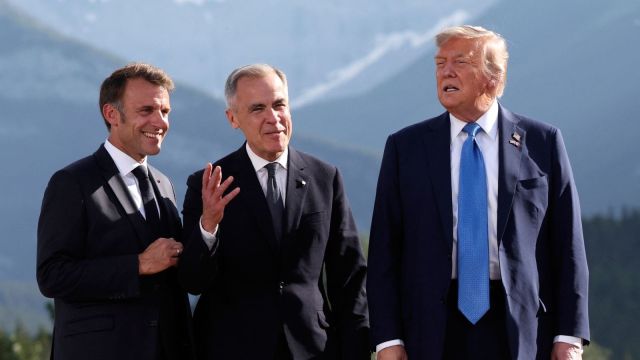
The G7 summit hosted by Canada in Alberta is taking place against the backdrop of geopolitical turbulence. Conflicts continue to rage in Ukraine and Gaza; the Israeli action against Iran has the potential to set the Middle East aflame. While the interim trade pact between US and China must be welcomed, it resembles more a temporary truce than a permanent deal. While a ceasefire is in effect between India and Pakistan, the Indo-Pacific remains on the knife edge, as evidenced by the recent manoeuvres of China in both the South and East China Sea. All major theatres of the world are experiencing turbulence of varying intensity and complexity.
The G7 in its heyday was an extremely powerful grouping on account of its overwhelming share of the global GDP. For instance, in the 1980s, the G7’s share of global GDP was almost 70 per cent. The share in 2024 is barely above 30 per cent. The main reason for this is that the economic centre of gravity has shifted from the West to the East, led by China but also because of countries like India. China is not part of G7. Neither is Russia. This does bestow some leverage on India, which practices strategic autonomy, follows an independent foreign policy and more broadly, represents the Global South. Until recently, the G7 was dismissed as “yesterday’s club”, especially after the formation of the G20. But a combination of geopolitical factors means G7 can have another shot at being relevant. This also has to do with the UN Security Council’s increasing powerlessness, the gradual irrelevance of WTO and America’s decision to pull out of the WHO and the Paris Climate Accord. The G20 (after an impressive showing by India under its presidency) is mired in difficulty for a variety of reasons. The G7 could fill a vacuum in the international relations system.
The invitation to India to attend the summit was a non-issue. It is hard to believe India, which has been part of 12 G7 Summits, could have been overlooked. In response to odd voices in Canada arguing against an invitation to Prime Minister Narendra Modi, the newly minted Canadian premier put it well: “As chair of the G7, it is important to invite the most important countries to attend to talk about issues such as energy, artificial intelligence, critical minerals, and India is really at the very centre of global supply chains.” PM Modi can bring his experience of attending five G7 Summits to the Alberta meetings. His bilateral meetings with the Canadian PM and other leaders will also be closely watched. It is also the first time PM Modi will be meeting world leaders after “Operation Sindoor” and he will get an opportunity to influence and gauge global opinion in this regard.
On Indo-Canadian ties, the fact of the matter is that India took the first steps to initiate a rapprochement with Canada. When Mark Carney was elected as Canada’s Premier, PM Modi made it a point to reach out and congratulate him. The foreign ministers of India and Canada spoke over the phone and committed themselves to improving bilateral relations. It is hoped by many well-wishers that PM Modi and PM Carney can hit it off when they sit together for a bilateral meeting in Alberta. The best possible and immediate outcome would be the quick reinstatement of high commissioners in both Delhi and Ottawa with substantial restoration of the strength of both diplomatic missions. Canada and India have too much at stake in the relationship to allow it to be derailed. The geopolitical uncertainty along with strategic turbulence means that both countries stand to gain enormously by not just restoring their ties to status quo ante, but also to chart a clear trajectory for taking the relationship to the next level.
Kumar is a former Indian Ambassador to France and currently dean/professor at O P Jindal Global University. Views are personal